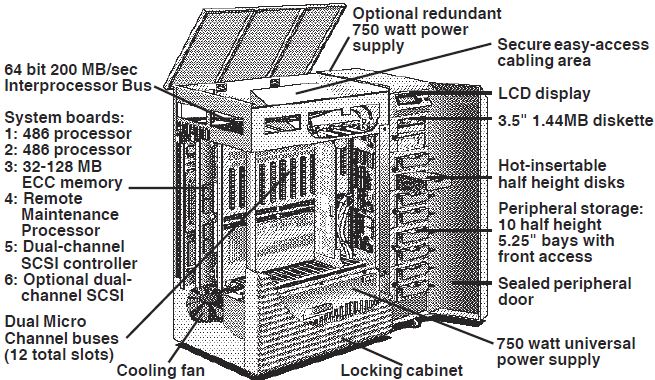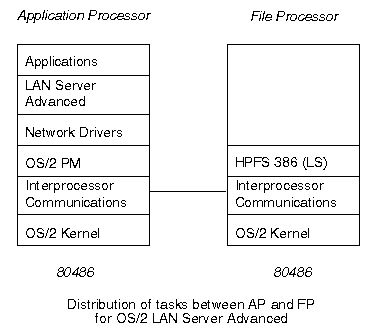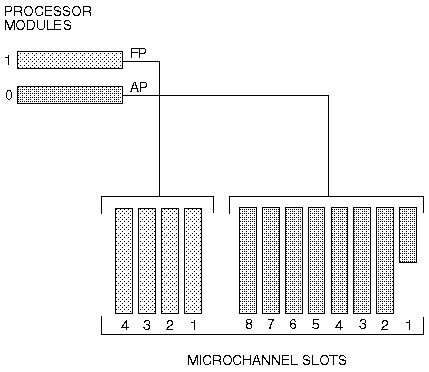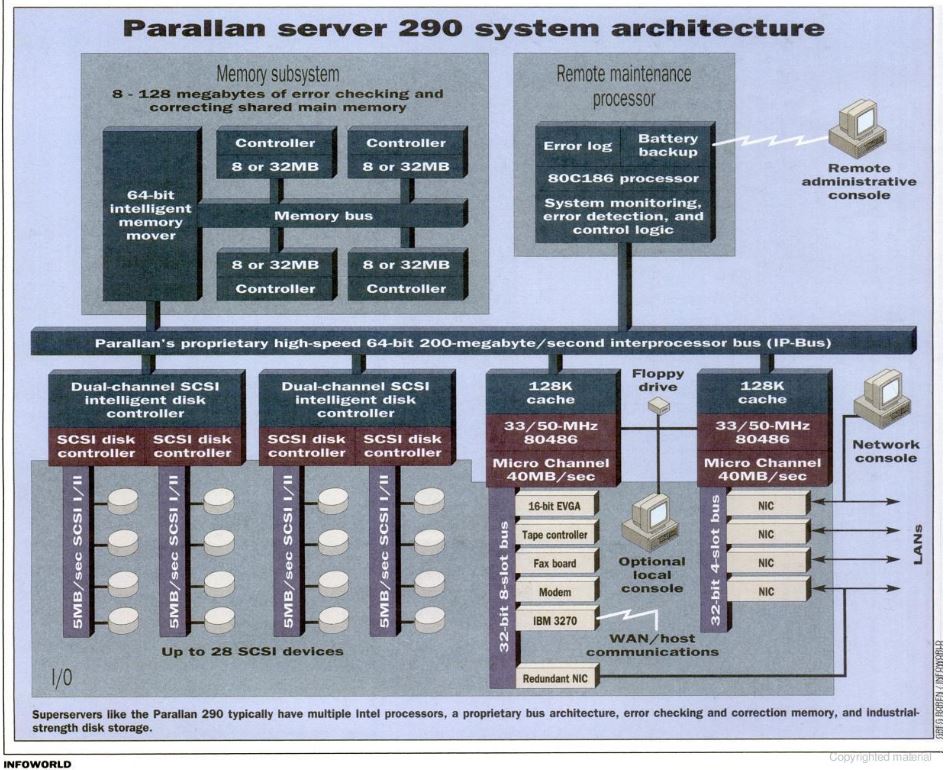|
192-297 IBM PS/2 Server 295 Preinstalled Software 193-097 IBM PS/2 Server 195 (8600-003) 193-098 IBM PS/2 Server 295 Enhancements (8600-001 AND -002) 193-099 Netware Software for PS/2 Server 195/295 193-215 IBM OS/2 2.1 Support for IBM PS/2 Server 195/295 193-388 IBM Internal 8MM Tape Drive for PS/2 Server 195/295 292-302 IBM Maximum Availability and Support System/2 IBM Multi Processing Extensions/2 IBM Orthogonal RAID-5 Disk Array/2 Titles from the Lorenzo Mollicone Library: 71G2213 PS/2 Server Diagnostics Manual - March 1993 71G1573 IBM PS/2 Server System Software Release 1.0 for NetWare 3.11 4/9/93 71G1572 IBM PS/2 Server NetWare Administrator's Guide - March 1993 8600 IP Boards 8600 Processor Board (either 486DX33 or 486DX-50) Outlines done 8600 Memory Board (128MB ECC-P) Outlines done 8600 Intelligent Drive Controller (IDC) (2x 53C700) Outlines done 8600 Remote Maintenance Processor (RMP) Board - Done. 8600 Power (Todd Products MAX-753-0512) - Done 195295fm.exe
Server 195/295 Field Maint. Test 2.0 750 watt universal power supply; Opt redundant
power supply. NOTE: The PSU is
Universal, but NOT Auto-Ranging. There is a set of spade
terminals on the PSU's PCB, connected for 115v, open for
230v.  I'm sure there is a better image somewhere... Processor: Each processor board has a switch on the mounting
bracket, AP or FP. 
Each processor board contains a 486DX processor, along
with a Level 2 memory cache, and the attachment to the
Micro Channel. There are two Micro Channels, one with
four slots, and the other with eight slots. The
processor in slot 0 is always connected to the
eight-slot Micro Channel, and the processor in slot 1 is
always connected to the four-slot Micro Channel.  Configuring the Server 295 for
multiprocessor or uniprocessor mode is done using the
utility MPSETUP, which is also used for installing Multi
Processing Extensions/2 and for allocating memory to the
AP and FP processors, and the HPFS cache.
When configured for multi-processor mode, changes are made to the CONFIG.SYS file, and a new CONFIG.FP file is created for the FP processor. However, the utility MPSETUP should always be used to switch between uni-processor and multi-processor modes. It is wise to always return to uni-processor mode before altering the CONFIG.SYS file or upgrading the operating system. ECC-P Memory with 4MB 30 Pin
SIMMs So... you need two banks of 4 SIMMs each for ECC-P, so
the minimum is 32MB, the next is four banks (64MB), six
banks (96MB), and 8 banks for a maximum of 128MB. NOTE: I have seen a
configuration screen, with a choice of "ECC: ON | OFF".
My guess is that ECC=P will not run on an odd number of
banks, so if you wanted to run 48MB, ECC would be "OFF".
Memory Management and OS/2
version 1.3 Bus Architecture: Disk/Controllers/Bays:
NOTE: I see two NCR
53C700 SCSI controllers. Not enough clarity to see if
there is a RISC controller or not. Option: 2 additional SCSI controllers (same as above,
on 1 card). Supports IBM 400 MB (11.5 ms) and 1 GB (11ms) SCSI
disks. Max of 9 GB internally (9 bays x 1 GB disk). Max of 28 GB total (4 SCSI x 7 disks (1GB)) with Exp
Cabinets. Ten 3.5" half height bays internally (diskette uses
one). Supports 1 to 3 optional External Expansion Cabinets
each with ten 5.25" half height or five 5.25" full
height bays. OS/2 preload includes FTUTIL: allows disk pairs to be
striped, mirrored, or duplexed. Also allows hot spare
pooling, hot insertion/extraction, automatic data
rebuild, and hot fix.
One or two disk controllers can be
installed on the IP-Bus, providing two or four SCSI disk
channels, respectively. Each channel can support up to
seven SCSI disks, for a maximum of 28 disk drives.
PDAs are set up using the Server 295 reference
diskette. Information on the PDAs can be displayed
using MASS/2. Configuring spare drives and
reconstructing a PDA following a drive failure is done
using the utility PDAUTIL, as well as automatically by
MASS/2, if there is a hot-standby spare disk in the
system. Orthogonal RAID-5 RAID Performance Characteristics
Note 2 : Availability = MTBF of one disk divided by the number of disks in the array. MASS/2 Features
(Maximum Availability and Support System/2) Integrated software allowing monitoring, controlling,
tuning, and recovery of 295. Allows 295 to be
geographically distributed while permitting
comprehensive, centralized control with mainframe-like
remote administration. Features: Continual monitoring of CPU, memory, disk,
network, and swapping level utilization via realtime bar
graph, and 1 hour history in RMP RAM, and historic logs
on disk. Continual monitoring of temp, PSU voltage,
single bit memory errors, network errors. Comprehensive configuration details (processors,
memory, SCSI, arrays, spares, RMP, UPS status,
adapters). Alarm and threshold selection with automatic
dial out capability for various events like disk
failure, disk full, reboots, shut downs, memory errors,
over temperature, power low/high, and network errors. Scheduled power down and power up; remote
rebooting. SAA-compliant graphical user interface
(hierarchical). Access to network operating system logs and
server logs. Multilevel password based security; G File
transfer capability. Preinstalled on Server 295. Inside the Parallan Super
Server Parallan Server 290
Architecture |


